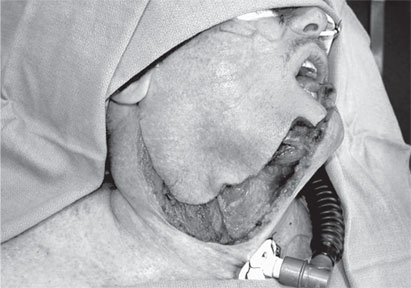|

Combating ill effects of tobacco, a universal effort
Tobacco Companies in the US were nailed hard against the wall with a
strong court order that was issued last week. The judgement was given in
a case that dragged on for a number of years. Today the word is
spreading across the world beyond the boundaries of district courts of
the United States.
 US District Judge Gladys Kessler told the Tobacco Companies to
display how they deceived consumers on the dangers of smoking as product
warning on their tobacco products. Judge Kessler ruled that tobacco
companies had broken Federal racketeering laws by deceiving the public
over several decades about the health dangers of smoking. US District Judge Gladys Kessler told the Tobacco Companies to
display how they deceived consumers on the dangers of smoking as product
warning on their tobacco products. Judge Kessler ruled that tobacco
companies had broken Federal racketeering laws by deceiving the public
over several decades about the health dangers of smoking.
She has said giving the judgment that the court made a number of
explicit findings that the tobacco companies perpetuated fraud and
deceived the public regarding the addictiveness of cigarettes and
nicotine.
Tobacco is the leading cause of three of the main Non Communicable
Diseases i.e. cardiovascular diseases, cancers and chronic lung
diseases. Tobacco use is considered to be one of the biggest threats to
public health that the world has ever faced.
It is responsible for six million deaths each year worldwide.
Alarmingly, 600,000 of this are non-smokers who were exposed to second
hand smoking.
It is found through research in the medical field that one in two of
current users will eventually die of tobacco-related diseases.
Many countries have implemented evidence based measures to reduce
tobacco use. One of the important measures undertaken to educate smokers
of the harms of tobacco use is mandating pictorial health warnings on
tobacco products.
Other measures include discontinuation of all forms on advertising,
sponsorships and promotions, increasing the taxes on tobacco to reduce
affordability and banning smoking in public places.
Money spent on purchasing tobacco and expenditure incurred in
obtaining treatment, in addition to foregone income from losing work is
a substantial contributor to poverty.
In Sri Lanka, the number of people dying each year due to tobacco has
been estimated to be between 12,000 and 20,000, according to the Sri
Lanka Medical Association.
In addition to deaths alone, there are a large number admitted to
hospitals with chronic tobacco related issues. Each of the deaths and
the other consequences are preventable.
The National Authority on Tobacco and Alcohol Act No. 27 of 2006, one
of the most important rules enacted in Sri Lanka, mandates that health
warnings to appear on tobacco packages to be prescribed by the Minister
of Health. The Act aims at reducing the enormous health, economic and
social harms of tobacco in order to improve the health and well-being of
the people.
The Act also makes it difficult for the tobacco industry to display
cigarette packs attractively at sales counters - even in supermarkets.
Sri Lanka is not alone in taking this drastic step that surely make
sales of tobacco companies desperate. Around fifty countries in Europe,
North and South America, Asia and Africa have already implemented this
measure despite dogged opposition by the tobacco industry.
Large, clear pictorial health warnings increase quitting and more
importantly prevent children and young people from getting into smoking
tobacco.
With the International Convention, which is the World Health
Organisation Framework Convention on Tobacco Control that entered into
force in February 2005, the international response to the epidemic of
tobacco use has been quite decisive.
Since 2005, it has become one of the most widely embraced treaties in
the history of the United Nations with more than 170 parties.
Sri Lanka was the fourth country to ratify it.
Mandating large and clear warnings are one of those steps that the
treaty binds its parties.
A spokesman for the Sri Lanka Medical Association also said that by
having pictorial warnings covering 80 percent of the front and the back
of the cigarette pack and by declaring the toxic substances contained in
cigarettes, will substantially address the enormous health, social and
economic harms caused by tobacco.
DY
Increasing sleep time improves daytime alertness
A new study suggests that extending night sleep in mildly sleeping,
healthy adults increases daytime alertness and reduces pain sensivity.
 “Our results suggest the importance of adequate sleep in various
chronic pain conditions or in preparation for elective surgical
procedures,” said Timothy Roehrs, the study's principal investigator and
lead author. “Our results suggest the importance of adequate sleep in various
chronic pain conditions or in preparation for elective surgical
procedures,” said Timothy Roehrs, the study's principal investigator and
lead author.
“We were surprised by the magnitude of the reduction in pain
sensitivity, when compared to the reduction produced by taking codeine.”
The study, appearing in the December issue of the journal SLEEP,
involved 18 healthy, pain-free, sleepy volunteers. They were randomly
assigned to four nights of either maintaining their habitual sleep time
or extending their sleep time by spending 10 hours in bed per night.
Objective daytime sleepiness was measured using the multiple sleep
latency test (MSLT), and pain sensitivity was assessed using a radiant
heat stimulus.
Results show that the extended sleep group slept 1.8 hours more per
night than the habitual sleep group. This nightly increase in sleep time
during the four experimental nights was correlated with increased
daytime alertness, which was associated with less pain sensitivity. In
the extended sleep group, the length of time before participants removed
their finger from a radiant heat source increased by 25 percent,
reflecting a reduction in pain sensitivity. The authors report that the
magnitude of this increase in finger withdrawal latency is greater than
the effect found in a previous study of 60 mg of codeine.
According to the authors, this is the first study to show that
extended sleep in mildly, chronically sleep deprived volunteers reduces
their pain sensitivity. The results, combined with data from previous
research, suggest that increased pain sensitivity in sleepy individuals
is the result of their underlying sleepiness.
- NYT
New test to better understand childhood deafness cause
A major advance in the diagnosis of inherited hearing loss has been
made as a result of research. A new genetic test has been piloted by
scientists that will ultimately make it possible to rapidly screen all
known deafness genes to give a far more accurate diagnosis of the cause
of a hearing loss.
 The new test will help parents of a deaf child understand the chances
of future siblings also being born deaf. Similar tests are also being
developed and should be available to families by late 2013. The
findings, show that by screening just 34 known deafness genes, an
accurate diagnosis could be given in roughly half the cases. The new test will help parents of a deaf child understand the chances
of future siblings also being born deaf. Similar tests are also being
developed and should be available to families by late 2013. The
findings, show that by screening just 34 known deafness genes, an
accurate diagnosis could be given in roughly half the cases.
Ultimately, all known deafness genes could be screened for the same
cost as it takes to test one or two genes today.
Professor Guy van Camp, who led the project, said: “Using today's
technology only a few of the many deafness genes can be routinely
tested, which means that an accurate diagnosis can typically only be
given in 10-20 percent of cases. Our new test uses advanced DNA
sequencing technology that can in principle screen all known deafness
genes at the same time. It's a major development from being able to test
one or two genes today to being able to screen all known deafness genes
in the future.”
Dr Ralph Holme, Action on Hearing Loss's Head of Biomedical Research,
said: “The majority of childhood deafness is inherited and knowing the
gene responsible can be incredibly important for parents who want to
know the likelihood of subsequent children inheriting deafness.
Knowing the cause of a child's deafness can also make it easier to
predict how their hearing loss may change over time and help choose the
most appropriate treatment or method of communication. This new test
will also be very useful in providing a more accurate picture of the
prevalence of different types of deafness affecting people across the
UK.”
- MNT
New antibodies to counter Alzheimer's and Parkinson's disease
Antibodies developed by researchers at Rensselaer Polytechnic
Institute are unusually effective at preventing the formation of toxic
protein particles linked to Alzheimer's disease and Parkinson's disease,
as well as Type 2 diabetes, according to a new study.
The onset of these devastating diseases is associated with the
inappropriate clumping of proteins into particles that are harmful to
cells in the brain (Alzheimer's disease and Parkinson's disease) and
pancreas (Type 2 diabetes).
 Antibodies, which are commonly used by the immune system to target
foreign invaders such as bacteria and viruses, are promising weapons for
preventing the formation of toxic protein particles. A limitation of
conventional antibodies, however, is that high concentrations are
required to completely inhibit the formation of toxic protein particles
in Alzheimer's, Parkinson's, and other disorders. Antibodies, which are commonly used by the immune system to target
foreign invaders such as bacteria and viruses, are promising weapons for
preventing the formation of toxic protein particles. A limitation of
conventional antibodies, however, is that high concentrations are
required to completely inhibit the formation of toxic protein particles
in Alzheimer's, Parkinson's, and other disorders.
To address this limitation, a team of researchers led by Rensselaer
Professor Peter Tessier has developed a new process for creating
antibodies that potently inhibit formation of toxic protein
particles.Conventional antibodies typically bind to one or two target
proteins per antibody. Antibodies created using Tessier's method,
however, bind to 10 proteins per antibody.
The increased potency enables the novel antibodies to prevent the
formation of toxic protein particles at unusually low concentrations.
This is an important step toward creating new therapeutic molecules for
preventing diseases such as Alzheimer's and Parkinson's.
“It is extremely difficult to get antibodies into the brain. Less
than 5 percent of an injection of antibodies into a patient's blood
stream will enter the brain. Therefore, we need to make antibodies as
potent as possible so the small fraction that does enter the brain will
completely prevent formation of toxic protein particles linked to
Alzheimer's and Parkinson's disease,” said Tessier, assistant professor
in the Howard P. Isermann Department of Chemical and Biological
Engineering at Rensselaer.
“Our strategy for designing antibody inhibitors exploits the same
molecular interactions that cause toxic particle formation, and the
resulting antibodies are more potent inhibitors than antibodies
generated by the immune system.”
Results of the new study, titled “Rational design of potent domain
antibody inhibitors of amyloid fibril assembly,” were published by the
journal Proceedings of the National Academy of Sciences (PNAS). The
study may be viewed here.
This research was conducted in the laboratories of the Center for
Biotechnology and Interdisciplinary Studies at Rensselaer.Tessier's
research represents a new way of generating therapeutic antibodies.
Currently, most antibodies are obtained by exploiting the immune system
of rodents. Mice are injected with a target protein, for example the
Alzheimer's protein, and the animal's immune system generates an
antibody specific for the target protein.
Tessier's method is radically different as it relies on rational
design approaches to create antibodies based on properties of the target
proteins.
- MNT
Healthy eating prevents recurrent heart attacks, strokes
If you have cardiovascular disease, a heart-healthy diet may help
protect you from recurrent heart attacks and strokes, according to new
research in the American Heart Association journal Circulation.
“At times, patients don't think they need to follow a healthy diet
since their medications have already lowered their blood pressure and
cholesterol,” said Mahshid Dehghan, study author and a nutritionist in
Canada.
“Dietary modification has benefits in addition to those seen with
aspirin angiotensin modulators, lipid-lowering agents and beta blockers.
 For the study, 31,546 adults (average age 66.5) with cardiovascular
disease or end organ damage were asked how often they consumed milk,
vegetables, fruits, grains, fish, meat and poultry in the past 12
months. They were also asked about lifestyle choices such as alcohol
consumption, smoking and exercise. For the study, 31,546 adults (average age 66.5) with cardiovascular
disease or end organ damage were asked how often they consumed milk,
vegetables, fruits, grains, fish, meat and poultry in the past 12
months. They were also asked about lifestyle choices such as alcohol
consumption, smoking and exercise.
Total scores were determined by daily fruits, vegetables, grains and
milk consumed and the ratio of fish to meats consumed.
During a follow-up of nearly five years, participants experienced
5,190 cardiovascular events.
Researchers found those who ate a heart-healthy diet had
* 35 percent reduction in risk for cardiovascular death;
* 14 percent reduction in risk for new heart attacks;
* 28 percent reduction in risk for congestive heart failure; and
* 19 percent reduction in risk for stroke.
Food habits in different regions of the world varied considerably;
however, a healthy diet was associated with prevention of recurrent
cardiovascular disease throughout the world in countries with different
economic levels, Dehghan said.
A diet rich in vegetables and fruits with a higher ratio of fish to
meats appeared to be more beneficial for preventing heart disease than
for preventing cancer fractures or injury.“Physicians should advise
their high-risk patients to improve their diet and eat more vegetables,
fruits, grains and fish,” Dehghan said. “This could substantially reduce
cardiovascular recurrence beyond drug therapy alone and save lives
globally.
-Medicalxpress
|



